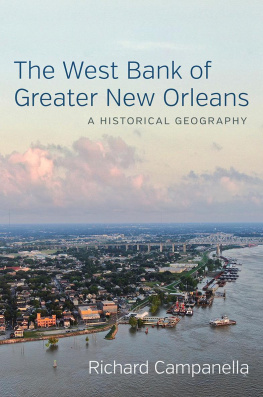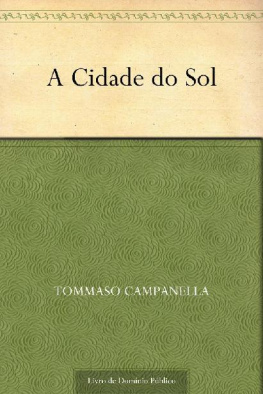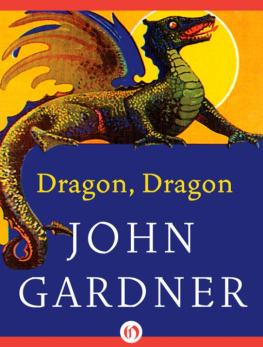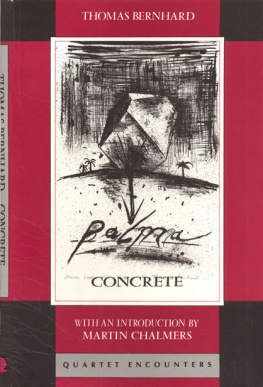Thomas J. Campanella - The Concrete Dragon
Here you can read online Thomas J. Campanella - The Concrete Dragon full text of the book (entire story) in english for free. Download pdf and epub, get meaning, cover and reviews about this ebook. year: 2012, publisher: Princeton Architectural Press, genre: Science. Description of the work, (preface) as well as reviews are available. Best literature library LitArk.com created for fans of good reading and offers a wide selection of genres:
Romance novel
Science fiction
Adventure
Detective
Science
History
Home and family
Prose
Art
Politics
Computer
Non-fiction
Religion
Business
Children
Humor
Choose a favorite category and find really read worthwhile books. Enjoy immersion in the world of imagination, feel the emotions of the characters or learn something new for yourself, make an fascinating discovery.

- Book:The Concrete Dragon
- Author:
- Publisher:Princeton Architectural Press
- Genre:
- Year:2012
- Rating:4 / 5
- Favourites:Add to favourites
- Your mark:
- 80
- 1
- 2
- 3
- 4
- 5
The Concrete Dragon: summary, description and annotation
We offer to read an annotation, description, summary or preface (depends on what the author of the book "The Concrete Dragon" wrote himself). If you haven't found the necessary information about the book — write in the comments, we will try to find it.
The Concrete Dragon — read online for free the complete book (whole text) full work
Below is the text of the book, divided by pages. System saving the place of the last page read, allows you to conveniently read the book "The Concrete Dragon" online for free, without having to search again every time where you left off. Put a bookmark, and you can go to the page where you finished reading at any time.
Font size:
Interval:
Bookmark:

THE CONCRETE DRAGON
CHINAS URBAN REVOLUTION
AND WHAT IT MEANS FOR THE WORLD

Thomas J. Campanella

For Tunney Lee
Published by
Princeton Architectural Press
37 East Seventh Street
New York, New York 10003
For a free catalog of books, call 1.800.722.6657.
Visit our web site at www.papress.com.
2008 Princeton Architectural Press
All rights reserved
No part of this book may be used or reproduced in any manner without written permission from the publisher, except in the context of reviews.
Every reasonable attempt has been made to identify owners of copyright. Errors or omissions will be corrected in subsequent editions.
Project Editor: Clare Jacobson
Copy Editor: Dorothy Ball
Designer print edition: Paul Wagner
Special thanks to: Nettie Aljian, Sara Bader,
Nicola Bednarek, Janet Behning, Becca Casbon,
Penny (Yuen Pik) Chu, Russell Fernandez,
Pete Fitzpatrick, Wendy Fuller, Jan Haux,
Aileen Kwun, Nancy Eklund Later, Linda Lee,
Laurie Manfra, Katharine Myers,
Lauren Nelson Packard, Jennifer Thompson,
Arnoud Verhaeghe, Joseph Weston, and
Deb Wood of Princeton Architectural Press
Kevin C. Lippert, publisher
The Library of Congress has catalogued the hardcover edition as follows:
Campanella, Thomas J.
The concrete dragon : Chinas urban revolution and what it means for the world / Thomas J. Campanella. 1st ed.
p. cm.
Includes bibliographical references and index.
ISBN 978-1-56898-627-2 (alk. paper)
1. UrbanizationChina. 2. Cities and townsChina. 3. Cities and townsChinaGrowth. 4. Rural-urban migrationChina. 5. Architecture and societyChina. 6. Social changeChina.
I. Title.
HT384.C6C36 2008
307.760951dc22
2007029870
ISBN 978-1-56898-948-8 (digital)

Political map of China: provinces, special administrative regions, autonomous regions, and autonomous prefectures. COURTESY OF JOHOMAPS.COM
Many individuals helped bring this book about. First and foremost is Tunney F. Lee, professor emeritus in the School of Architecture and Planning at the Massachusetts Institute of Technology. In the early 1990s I had the good fortune of working with Tunney and his late wife, Irene, on a number of research projects at the Chinese University of Hong Kong, where Tunney had just launched a new department of architecture. Born in Taishan in the Pearl River Delta and raised in Bostons Chinatown, Tunney studied architecture at the University of Michigan and took a job with Buckminster Fullers office in Raleigh, North Carolina, in 1954. He later worked for I. M. Pei and Marcel Breuer, and he helped build Resurrection City on the Washington Mall in 1968 before joining MITS Department of City and Regional Planning three years later. Tunney was among the first American architects to visit the Peoples Republic of China, and in 1980 he was part of the first official delegation of U.S. planners to visit the countrya group that also included Kevin Lynch, David Godschalk, Carol Thomas, Tridib Banerjee, and Donald Appleyard. One of the fruits of that trip was the MITTsinghua University Beijing Urban Design studio, launched in 1985 and the first and longest-running teaching collaboration between a Chinese and an American university. It was the third such studio, in 1992, that first brought me to China.
Tunney has always been a source of sane and measured analysis of cities, and has more than once reeled in my hyperbole. When I first met Tunney in 1993, I told him I would like to one day write a book about Chinese urbanism. He responded with an irritating little parable about an American academic who discovers China: Upon his first visit, the scholar is ready to write a book; after visiting a second time, he decides to settle for an article. By the third visit, our erstwhile academic realizes he knows virtually nothing about China, and had better keep his mouth shut. I cant say I heeded Tunneys advice, but it did take a decade and many China trips to get that book out.
I must also thank Gary Hack and Jan Wampler, who codirected the 1992 studio, and my Tsinghua University lao shi (master teachers), Zhu Zixuan and Wu Liangyong. Mike Joroff, who directed MITS East Asia Architecture and Planning Program for many years, was also instrumental in facilitating my early travel to Hong Kong and the Peoples Republic. My good friend and mentor Jeff Cody has been a perennial source of wisdom and insight about Chinese urbanism, and also provided extensive comments on an early draft of this book. Daniel Abramson, another alumnus of the MIT Beijing studio, also deserves special thanks for assistance over the years, as do Wallace P. H. Chang, Anthony G. O. Yeh, Larry Vale, Andrew Li, and Shrinath Tandur. Several of my colleagues at the University of North CarolinaChapel Hill helped bring this book to fruition, especially Yan Song, Meenu Tewari, Emil Malizia, Robin Visser, Dave Godschalk, Gang Yue, Peter Coclanis, Kevin Hewison, Udo Reisinger, and Christine Boyle. I also benefited from the counsel of many of my colleagues at Nanjing Universitys School of Architecture, especially Zhao Chen, Ding Wowo, Ji Guohua, Zhang Lei, and Zhang Qiang. For their input, guidance, and support I also thank Thomas Hahn, Bob Epting, Bill McDonough, Jerold Kayden, Ralph Gakenheimer, Wang Jun, Peter Rowe, Zhang Ming, Max Page, Mark Schuster, Fang Ke and Zhang Yan, Ronald Knapp, Annabel Leung, Nelson Chen, Michael Tomlan, Dennis Frenchman, Paul Wang, Tao Ho, Qing Shen, Zhan Guo, and Anne Patrone. Photographer Jiang Shigao generously allowed me to reproduce two of his extraordinary photographs of Shenzhen in the 1980s. My editor at Princeton Architectural Press, Clare Jacobson, helped shepherd this book to press with both charm and discipline. Finally, a large number of friends and family helped make the labor behind this book worthwhile. I thank especially Alfreda Stadlin, Michele Berger and Tim Keim, Wu Nong, Paul Kapp, Jean Riesman, Vishaan Chakrabarti, Uwe Brandes, Anthony Townsend, Roy Strickland, Wing-sze Cheung, and Jamie Morano. And above all I thank my parents, Mario and Rose Campanella, for their innumerable gifts over the years; my brother and fellow urbanist, Richard Campanella; and the sunbeam of my life, Wu Wei, without whom this bookand its authorwould be sad work indeed.
This book was enriched, directly and indirectly, by funding from the Kelly-Webb Trust, the Paul Sun Endowment Fund, the Albert Kunstadter Family Foundation, the Rockefeller Brothers Fund, and a Fulbright Fellowship from the Institute for International Education. Grants from the Carolina Asia Center, the University Research Council, and the College of Arts and Sciences at UNC also helped support field work and preparation of the finished manuscript. For all this, I am most grateful.
Following spread: Migrant worker on demolition site, Nanjing, Gulou District, 2006; the demolished buildings were part of the last old neighborhood in the center city. PHOTOGRAPH BY AUTHOR
Into the ruthless centrifuge of change.
Carl Schorske

Font size:
Interval:
Bookmark:
Similar books «The Concrete Dragon»
Look at similar books to The Concrete Dragon. We have selected literature similar in name and meaning in the hope of providing readers with more options to find new, interesting, not yet read works.
Discussion, reviews of the book The Concrete Dragon and just readers' own opinions. Leave your comments, write what you think about the work, its meaning or the main characters. Specify what exactly you liked and what you didn't like, and why you think so.









